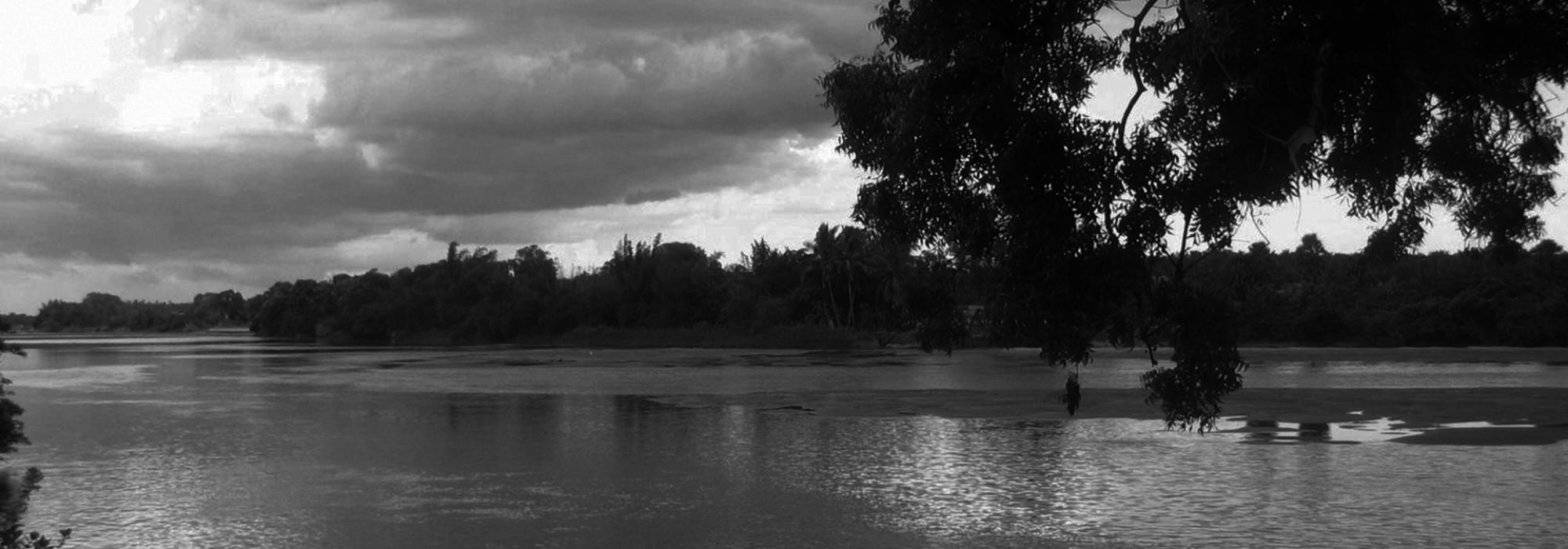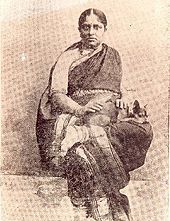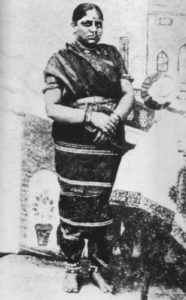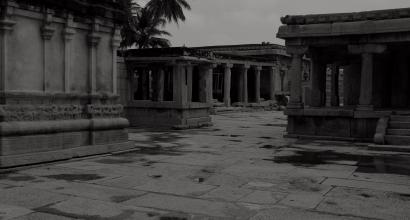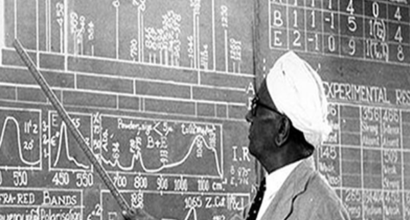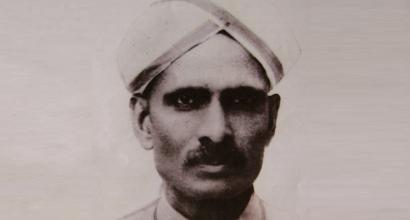Bangalore Nagarathnamma hailed from Mysore.
She is different from Kolar Nagarathnamma. Kolar Nagarathnamma's mother was Nanjundasani, a renowned scholar and artist both in classical music and Bharatanatyam. She had won numerous accolades among both the laymen and pundits alike. She was more famous as a classical singer, known for her melodious voice. Her brother Puttaswamayya was an acclaimed violinist who unfortunately passed away at a young age.
Bangalore Nagarathnamma originally hailed from Nanjangud, some fifteen kilometers from Mysore. Her mother was given shelter by the town’s famous lawyer, Subba Rao. After Nagarathnamma grew up, her mother shifted base to Mysore for her daughter’s higher education.
Nagarathnamma learnt classical music and literature under the tutelage of Tamayya, closely associated with asthana vidwan (resident court scholar/artist), the poet Giri Bhatta. She learnt Sanskrit poetry to an advanced degree. Not just that. She was able to discern the correct and incorrect application of Sanskrit words and was well-versed in grammatical concepts of sandhi, samasa, alankara, and related disciplines. This is why she stands unparalleled when she sings Sanskrit shloka-gamakas.
She also had intensive training in Kannada literature. She would recite, using appropriate ragas, verses from classics such as Jaimini Bharata, Rajashekharavilasa, and Kumaravyasa Bharata, and give learned commentaries on them. She was a great scholar.
I know her from about 1908-09. I have attended several of her concerts in Chickpet, in the mansion of Sahuji, in the hall upstairs. One of the regular attendees of her concerts was the late Chief Judge K. S. Chandrashekhara Iyer. He had tremendous admiration for her prowess in singing Sanskrit verses, and used to remark, “this is the trademark style of Nagarathnamma.”
Even while she was still a student in Mysore, it appears that her fame reached the ears of the durbar of Maharaja Chamaraja Wodeyar. The bounty of His Highness turned towards her.
After some time, her mother decided that Bangalore was a more suitable place for Nagarathnamma ‘s talent to fully blossom. She arranged to send her to stay with her elder brother, the violinist Venkataswamappa. “Violin” Venkataswamappa in those days was an accomplished and much sought after violinist. His house was in Nagarathapet near the Kalamma temple. Nagarathnamma continued her music and dance training in that house.
In the Shelter of Narahari Rao
Fame of Nagarathnamma’s beauty soon reached the ears of the High Court judge Narahari Rao. He gave her shelter. When he finally decided to give her shelter, he thought of taking his wife’s permission.
Narahari Rao: I wish to say something to you. I need your permission.
His wife: You asking for my permission? Is that even acceptable? Just tell me what you desire of me.
Rao: It’s not that. This is a special occasion. From the past few days, I have come to greatly admire the music of Nagarathnamma. She sings extraordinarily well. I wish to regularly go to her home to savor her music. Let me know if you are against the idea. I shall abandon it right away.
Mrs. Rao: My wish is to fulfill your wish.
Rao: I shall see to it that you are not troubled by it in any manner.
Mrs. Rao: What trouble could I possibly have? You have done everything there is to do for raising a family. Our children are all grown up and independent. Our daughters have gotten married. Our sons are well-educated. And it is our duty to see to it that you are comfortable and happy.
This is how that great mother gave him her permission.
I learnt of this episode from someone who was in his inner circle. This person had received shelter in Narahari Rao’s house and studied in Central College after which he obtained a good job, went on to occupy a high post and was known as a scrupulous and competent professional.
After finishing court in the evening, Narahari Rao used to park his coach outside Nagarathnamma’s house and spend some time listening to her music. He was a huge connoisseur of literature and music. His children, Lakshmi Narasimha and T. Hanumatha Rao were close friends of Vidwan Vasudevachar. They would invite Vasudevachar to their homes and shower him with hospitality for weeks on end. Lakshmi Narasimha was one of the founders of the Karnataka Sahitya Parishad. He had an in-depth knowledge of English literature as well.
As he neared retirement, Narahari Rao, with great foresight arranged for Nagarathnamma’s livelihood in Madras (today’s Chennai). She was given shelter by a businessman, Sahukar Mudaliar. In a short while after that, Nagarathnamma scaled the heights of fame in music and was able to live independently.
Nagarathnamma’s Last Days
The last time I saw her was during the regime of Dewan Sir Arcot Ramaswamy Mudaliar. She had come to Bangalore to seek help and assistance for a charitable project she had undertaken.
Her personal life during her last days was joyless. Two of her children had died. Another adopted child too, passed away. As the Bhagavatam says, God gives immense suffering to those dear to him.
She realized that she would find no solace in anyone or anything except at the feet of Lord Rama. The wealth and the fame that she had earned, she realized, came from the grace of the composer-saint Tyagaraja. And so she resolved to offer everything she had to her Saint-Guru, long removed in time, and to his chosen deity, Lord Rama.
After she set her mind on this, she said a vision of Tyagaraja’s samadhi came to her in a dream one night. The very next day she reached Tiruvayur, Tyagaraja’s final resting place. There, with the help of friends, she scouted the graveyard and finally managed to locate his grave.
After this, she met the concerned government officials, obtained the required manpower, and built a beautiful Sitarama temple at the spot of his samadhi. In the process, she exhausted everything she had earned. She sold her own house in Sahukarpet in Madras and used that money for the temple. If memory serves me right, she got some Rs. 30,000 for that house—in those days. This apart, she sold her entire jewelry — gold, silver, and all kinds of precious stones.
When Bangalore Nagarathnamma built her Sahukarpet house in Madras, she invited the formidable musician Bidaram Krishnappa all the way from Mysore to give a concert for the housewarming ceremony. All the important connoisseurs from Madras were present at the concert as well. One of them included the proprietor and publisher of The Hindu, Kasturirangan Iyengar. The concert was delightful. At the conclusion, Kasturirangan asked, “Will this musician agree to sing at any other venue? How about my house?”
“With pleasure.”
As soon as he heard this, Kasturirangan said, “What we are really interested in is a singer who can sing Kannada devaranamas. We have enough and more musicians here who can sing Tyagaraja compositions. We really wish to listen to devaranamas.”
Bidaram Krishnappa happily agreed. In my view, this was the stepping stone for Krishnappa’s eventual and immense popularity in Tamil Nadu’s music circles.
Mysore Memorial Hall
Nagarathnamma was innately generous. She knew no jealousy. However, she had one unfulfilled ambition. She wanted to build a memorial hall each in Mysore and Tiruvayur. She said, “I have spent everything that God has given me for temples and pujas. In the Tamil country, I have numerous people who will give me money if I ask them. Within the Nattukoti Chetty community, I know people wealthy enough…just one person will give me the entire funding for the memorial. But then, they will dedicate the memorial to the person of their choice. If this is the case, where does the pride of Mysore stand? The glory of the Kannada people needs to shine in Tyagaraja’s memorial as well. People who visit Tiruvayur from Mysore must have a place where they can obtain easy accommodation. Also, the memorial must have a facility for those interested to learn Carnatic classical music. This is the reason I have come here to seek donations.”
I spoke to several of my friends—both ministers in the government and wealthy businessmen—about her noble proposal. It didn’t bear any fruit. In the end, I put this forward to Dewan Ramaswamy Mudaliar who was my political opponent. He sent his car, brought her to his home, introduced her to his wife and donated five hundred rupees. After this, he arranged for her concert in the Mudaliar Sangha and raised a considerable donation. Further, he arranged for yet another fundraising concert in the Puttanna Chetty Town Hall and attended it in person. This helped her to some extent.
Method of Teaching Music
During her last visit to Bangalore, Nagarathnamma stayed in Tarabai’s house in Basavanagudi. Nagarathnamma’s typical Saturday routine was to perform puja in the evening followed by bhajans. I was present at one such occasion. After the bhajan, she began to teach a composition of Mysore Sadashiva Rao to one of her students. If I recall correctly, it was Ramakathasudhasagara in the raga Harikambhoji.
It is an extremely tough composition. Indeed, the said raga is itself pretty tough. In the last thirty years, I haven’t heard any great musician sing its alapana followed by the pallavi. And set in this raga, this composition was hard as iron.
And so I asked her, “Why did you choose such a formidable composition, that, at this age?” She replied, “There are several teachers to teach easy compositions. In the old days, there were large numbers of teachers who would teach tough compositions. Such teachers were my gurus. I am merely following the path they have laid down.”
Tradition
After about five or six days, I visited her in the afternoon at around 3. She was lying in bed, moaning in pain.
I said, “What happened amma?”
She said, “I’m unwell,” but sat up.
I offered to leave.
“No. If I talk to you for a while, it’ll help to forget this pain,” she replied.
Our conversation drifted to dance. I asked her a question about traditional dance.
She said, “How can this old woman demonstrate now? But I’ll try, sitting in this posture.”
She removed the cloth she had tied around her head. Then she threw aside the blanket she had on, folded her hands, sat back down and began an alapana:
sabhakalpatarum vande
vedashakhopajivinam
shastrapushpa samayuktam
vidvadbhramarashobhitam
and said, “This is how you must salute the audience. The tradition is to begin with the raga Nata (or Nattai) and then move on to Vasanta. And then sing the pada, matu, and varnam in this raga.”
After this, she demonstrated her dancing prowess for about ten minutes. In traditional dance, the invocatory piece is known as alaripu. Literally, it means “the blooming of a flower.” In other words, the dance performance should make the minds of the audience bloom like a flower. And when the artist sings and enacts (abhinaya) the pada, her mind should equally bloom like a flower; and so should that of the audience.
After this explanation, she performed the 'Yahi' ashtapadi. In the end, just as how a great poet is a new creator, so is also a great performing artist. Performance too is a sort of creative commentary.
Nagarathnamma was endowed with a great sense of humor. Talking about herself, she once remarked, “I was Nagarathna (literally, “precious stone/jewel on the head of a snake”) by birth, then became bhogaratna (jewel of pleasure), and now I’m rogaratna (jewel of disease).”
I said, “You forgot two more.”
She asked, “Which ones?”
I replied, “One, ragaratna (jewel of musical ragas). Two, tyagaratna (jewel of sacrifice). Pleasure and disease are temporary. But your music impacts your listeners permanently—it becomes part of, and stays forever in their joys, it elevates their lives. And the living symbols of your sacrifice will stay on forever in Tiruvayur.”
She folded her hands the moment I said, and replied, “Please keep these words to yourself.”
(This is an extract from D V Gundappa's Jnapakachitrashaale translated from the Kannada original. Copyright for the original rests with the Gokhale Institute of Public Affairs (GIPA). When DVG wrote this profile, Bangalore Nagarathnamma was still alive.)

